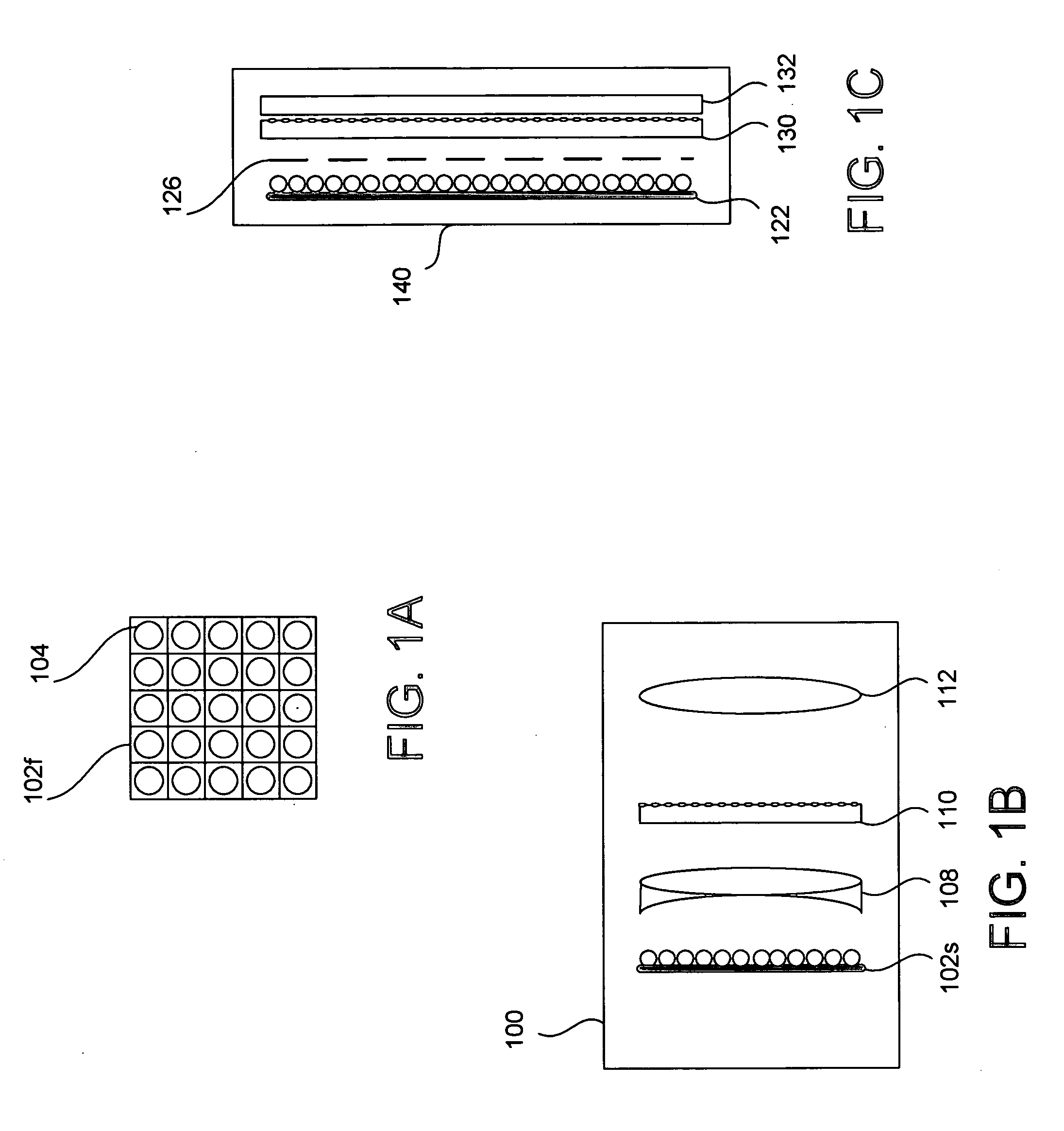Field sequential light source modulation for a digital display system
ield sequential technology, applied in the field of image processing and modulation system of a digital display system, can solve the problems of reducing magnification, difficult to achieve acceptable visual quality, and changing display characteristics, so as to improve image consistency, enhance color gamut, and improve image quality
- Summary
- Abstract
- Description
- Claims
- Application Information
AI Technical Summary
Benefits of technology
Problems solved by technology
Method used
Image
Examples
first embodiment
[0150] In a first embodiment, the LED configuration of FIG. 6 is combined with an image modulator 244 that includes a color filter. The image modulator typically has one independently controlled sub pixel for each color such that a display with 1600 columns of pixel triads (R, G, B) has 4800 actual pixel sites that are controlled by the DOP 230 and image modulator drivers 242. Since the image modulator includes color filters, a white light source is all that is required. The white light may be provided by white LEDs, by colored LEDs or some combination where changes in the light color can be used to affect the color temperature. In a more sophisticated system, the image data can be used to control the LEDs to affect the pixel colors for the display image either across the entire image or on a sub image basis. The individual rows of LEDs may be controlled all at once or sequenced from top to bottom matching the display information scanned via the image modulator drivers 242 into imag...
second embodiment
[0152] A second embodiment where the image modulator 244 does not include a color filter uses the LED configuration of FIG. 6 in a field sequential color mode. The effective display image is determined by the three (R, G, B) sequential color image fields. The resolution of the image modulator, since it only needs to support one color at a time, is typically one third that of the equivalent color filtered image modulator. Similarly, the number of pixels required to be scanned into the image modulator for each color is one third of the total. Depending on the speed and configuration of both the image modulator 244 and the image modulator drivers 242, the time to scan in each color field image may or may not be lower than scanning the complete image. Temporal Gamma Processing across the color fields may be used to achieve more accurate and higher scanning rates. The timing of the color fields within a frame and between frames may be varied along with the flashing intervals to avoid col...
PUM
 Login to View More
Login to View More Abstract
Description
Claims
Application Information
 Login to View More
Login to View More - R&D
- Intellectual Property
- Life Sciences
- Materials
- Tech Scout
- Unparalleled Data Quality
- Higher Quality Content
- 60% Fewer Hallucinations
Browse by: Latest US Patents, China's latest patents, Technical Efficacy Thesaurus, Application Domain, Technology Topic, Popular Technical Reports.
© 2025 PatSnap. All rights reserved.Legal|Privacy policy|Modern Slavery Act Transparency Statement|Sitemap|About US| Contact US: help@patsnap.com



